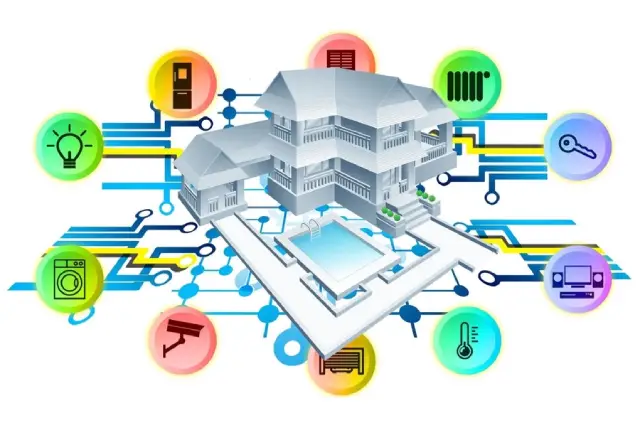Home automation has become a key interest for tech-savvy homeowners, with ESPHome emerging as a crucial system in building personalized smart homes. Leveraging ESPHome empowers users to control IoT devices like ESP8266 and ESP32, integrating them seamlessly into platforms like Home Assistant. This article will explore the fundamentals of ESPHome, its features, benefits, and a guide to optimizing it in your smart home projects.
What is ESPHome?
ESPHome is an open-source framework enabling users to configure and control ESP8266, ESP32, and other microcontrollers for smart home applications. By using straightforward YAML configuration files, users can easily tailor their devices’ firmware to specific requirements without advanced programming knowledge. ESPHome’s compatibility with Home Assistant makes it especially popular, offering a reliable way to manage multiple devices from a central hub.
ESPHome primarily supports components like sensors, switches, and displays, but it’s adaptable enough to include many IoT functions. By connecting ESPHome to your network, it facilitates control over a variety of sensors and enables complex automations, like activating lights based on motion or adjusting HVAC settings according to room temperature.
Key Features of ESPHome
1. Simplified YAML-Based Configuration
ESPHome’s YAML-based configuration approach allows users to define device functions quickly. Whether adding temperature sensors, creating automations, or modifying LED colors, a few lines of YAML code are typically all that’s required. This simplicity is valuable for beginners while still flexible enough for advanced customizations.
2. Seamless Integration with Home Assistant
ESPHome was designed to integrate with Home Assistant, one of the leading open-source home automation platforms. This compatibility allows for real-time monitoring and control, letting users interact with ESP devices directly from Home Assistant’s interface.
3. Deep Sleep Mode for Power Efficiency
ESPHome supports a deep sleep mode, particularly valuable for battery-powered projects. This feature allows devices to conserve energy when inactive, making it ideal for remote sensors or low-power applications where frequent charging isn’t feasible.
4. Over-the-Air (OTA) Updates
Updating device firmware through OTA updates is one of ESPHome’s standout features. Rather than reconnecting each device for manual updates, OTA enables users to push updates wirelessly, saving significant time and effort for those managing multiple devices.
5. Flexible Hardware Support
ESPHome supports a wide variety of sensors and hardware beyond the ESP8266 and ESP32 boards, including options like the BME280 temperature and humidity sensors and various LED strips. This flexibility allows users to build tailored, complex systems that align with specific smart home needs.
Benefits of Using ESPHome in Home Automation
- No Programming Knowledge Required: ESPHome is beginner-friendly, requiring no programming background. Users simply write YAML configuration files, which ESPHome translates into firmware.
- Energy Efficiency: With deep sleep mode, ESPHome devices can conserve power effectively, extending the battery life of remote sensors.
- Cost-Effective: By repurposing inexpensive ESP boards, ESPHome offers an affordable alternative to proprietary smart devices.
- Highly Customizable: With support for multiple components, ESPHome is highly adaptable, ideal for both simple and complex smart home projects.
Getting Started with ESPHome
Step 1: Install ESPHome
To start with ESPHome, you can either:
- Use the Home Assistant add-on (ideal if you’re using Home Assistant OS),
- Install it using Python, or
- Run it via Docker.
This versatility in installation makes ESPHome accessible across diverse operating systems and environments.
Step 2: Configuring Your First Device
Using ESPHome’s web-based YAML editor, begin configuring your ESP device. Start with a simple sensor setup, such as adding a temperature sensor. Here’s an example:
yamlCopy codesensor:
- platform: bme280
temperature:
name: "Room Temperature"
pressure:
name: "Room Pressure"
humidity:
name: "Room Humidity"
address: 0x77
update_interval: 60s
Step 3: Flashing the Firmware
Once configured, flash the firmware to your ESP8266 or ESP32 device. You can use the ESPHome-Flasher tool or directly upload firmware using ESPHome’s web tools. OTA updates can be enabled for future firmware revisions.
Advanced ESPHome Applications
1. Creating Multi-Sensors
ESPHome lets you create multi-sensor devices. With just one ESP32 or ESP8266, you can monitor temperature, humidity, motion, and air quality, consolidating multiple functions into a single, efficient device.
2. Utilizing Deep Sleep for Energy Efficiency
Deep sleep mode is a standout feature of ESPHome for battery-operated devices. By configuring your device to wake only when necessary (e.g., every hour or when motion is detected), you can significantly extend battery life.
3. Presence Detection Using BLE Beacons
Using Bluetooth Low Energy (BLE) beacons, you can set up presence detection to trigger specific actions based on proximity, like turning on lights when you approach or activating a door lock when your phone is nearby.
4. Custom Light Control
ESPHome supports control of addressable LED strips. These LED configurations are ideal for accent lighting or ambient lighting setups that are fully customizable via Home Assistant.
Best Practices and Tips for Optimizing ESPHome
- Plan Your YAML Configuration Carefully: Avoid unnecessary configurations that could drain resources or cause errors. Start with basic settings and add complexity gradually.
- Test Deep Sleep Duration: While deep sleep mode saves power, it’s essential to test the duration settings to balance device responsiveness with power conservation.
- Keep Firmware Updated: ESPHome and Home Assistant frequently release updates that can improve functionality and fix bugs, so keep devices updated for optimal performance.
- Use Reliable Power Sources for Critical Devices: Battery-operated devices are convenient, but for critical systems (e.g., security sensors), ensure reliable power sources to prevent unexpected downtime.
Internal and External Resources for ESPHome Users
Important Resources:
- ESPHome Documentation – The official ESPHome documentation covers installation, configuration, and troubleshooting in detail.
- ESP for Beginners – Step-by-step tutorials for ESPHome projects, including deep sleep configurations.
- YouTube Tutorials: Introduction to ESPHome – Watch detailed guides to setting up ESPHome devices.
Also Read: Google’s Algorithm Update Impact on SEO Strategies for 2024
